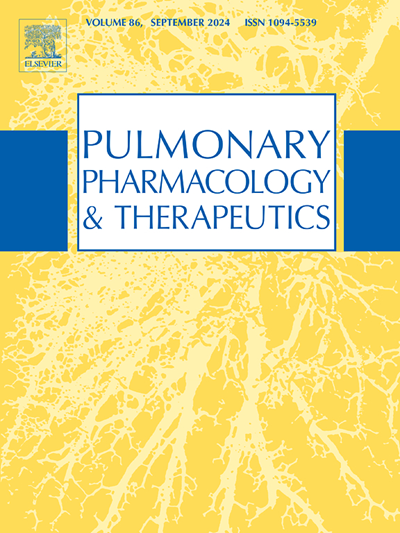苦参酚A靶向抑制IDO1增强非小细胞肺癌的放射敏感性。
IF 2.8
3区 医学
Q2 PHARMACOLOGY & PHARMACY
引用次数: 0
摘要
苦参酚是一种单体化合物,从药用植物苦参的根中提取。为探讨苦参酚A在非小细胞肺癌(NSCLC)中的活性,采用CCK-8测定、流式细胞术和Western blot检测。建立异种移植小鼠模型。我们的研究结果表明,Kushenol A处理显著增强了辐射对NSCLC细胞的杀伤作用。与单独放疗相比,放疗和Kushenol A联合治疗显著降低了细胞活力,增加了细胞内ROS水平,并增加了凋亡细胞的比例。动物实验进一步证实,与单独放疗小鼠相比,同时给予Kushenol A的放疗抑制了肿瘤生长,提高了放疗敏感性。此外,苦参酚A对小鼠主要器官没有产生明显的毒性损害。从机制上讲,放射治疗联合Kushenol A治疗可显著上调裂解型Caspase-3和裂解型Caspase-9的蛋白水平,导致Bax从细胞质转运到线粒体。同时,Kushenol A处理降低了细胞质中的NRF2水平,从而促进ROS水平的增加。值得注意的是,Kushenol A通过靶向抑制吲哚胺2,3-双加氧酶1 (IDO1)增强肿瘤放射敏感性。综上所述,我们的研究结果表明,Kushenol A和辐射共处理可促进Bax进入线粒体并激活线粒体凋亡途径。Kushenol A表现出对IDO1的靶向抑制,增强了非小细胞肺癌对放疗的敏感性。本文章由计算机程序翻译,如有差异,请以英文原文为准。
Targeted inhibition of IDO1 by Kushenol A enhances radiosensitivity in non-small cell lung cancer
Kushenol, a monomeric compound, was extracted from the roots of the medicinal plant Sophora flavescens. To explore the activity of Kushenol A in non-small cell lung cancer (NSCLC), CCK-8 assay, flow cytometry, and Western blot were performed. A xenograft mouse model was established. Our results demonstrated that Kushenol A treatment significantly enhanced the killing effect of radiation on NSCLC cells. Co-treatment with radiation and Kushenol A markedly reduced cell viability, increased intracellular ROS levels, and elevated the proportion of apoptotic cells compared to NSCLC cells treated with radiation alone. Animal experiments further confirmed that radiation therapy with simultaneous Kushenol A administration suppressed tumor growth and improved radiotherapy sensitivity compared to mice treated with radiation alone. Furthermore, Kushenol A did not produce significant toxic damage to the major organs of mice. Mechanistically, radiation therapy combined with Kushenol A treatment significantly upregulated protein levels of cleaved Caspase-3 and cleaved Caspase-9, leading to Bax translocation from the cytoplasm to mitochondria. Concurrently, Kushenol A treatment reduced NRF2 levels in the cytoplasm, thereby promoting an increase in ROS levels. Notably, Kushenol A enhanced tumor radiosensitivity by targeted inhibition of Indoleamine 2,3-dioxygenase 1 (IDO1). Taken together, our findings suggested that cotreatment with Kushenol A and radiation promoted the entry of Bax into mitochondria and activated the mitochondrial apoptotic pathway. Kushenol A exhibited targeted inhibition of IDO1, enhancing the sensitivity of non-small cell lung cancer to radiotherapy.
求助全文
通过发布文献求助,成功后即可免费获取论文全文。
去求助
来源期刊
CiteScore
6.20
自引率
0.00%
发文量
41
审稿时长
42 days
期刊介绍:
Pulmonary Pharmacology and Therapeutics (formerly Pulmonary Pharmacology) is concerned with lung pharmacology from molecular to clinical aspects. The subject matter encompasses the major diseases of the lung including asthma, cystic fibrosis, pulmonary circulation, ARDS, carcinoma, bronchitis, emphysema and drug delivery. Laboratory and clinical research on man and animals will be considered including studies related to chemotherapy of cancer, tuberculosis and infection. In addition to original research papers the journal will include review articles and book reviews.
Research Areas Include:
• All major diseases of the lung
• Physiology
• Pathology
• Drug delivery
• Metabolism
• Pulmonary Toxicology.

 求助内容:
求助内容: 应助结果提醒方式:
应助结果提醒方式:


